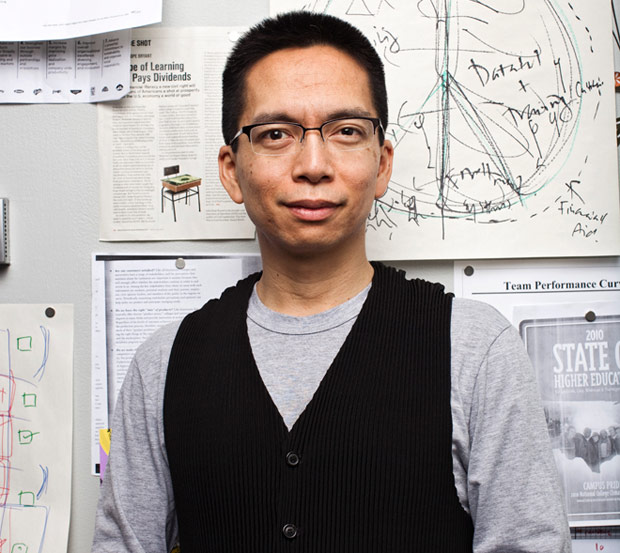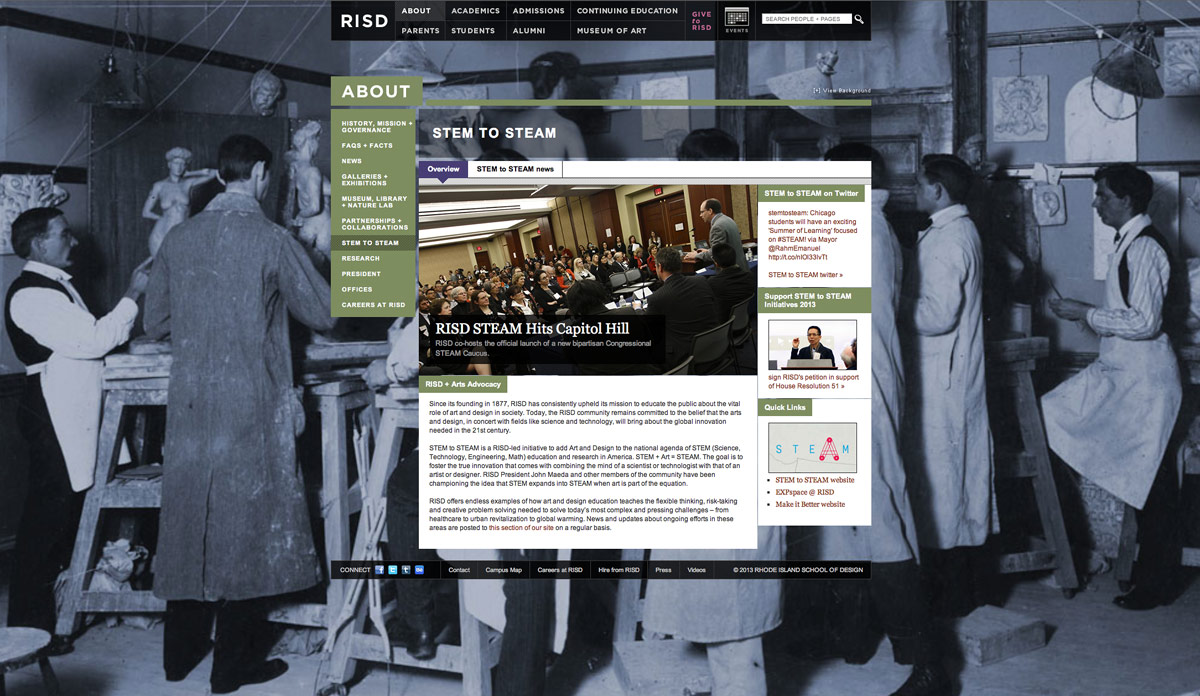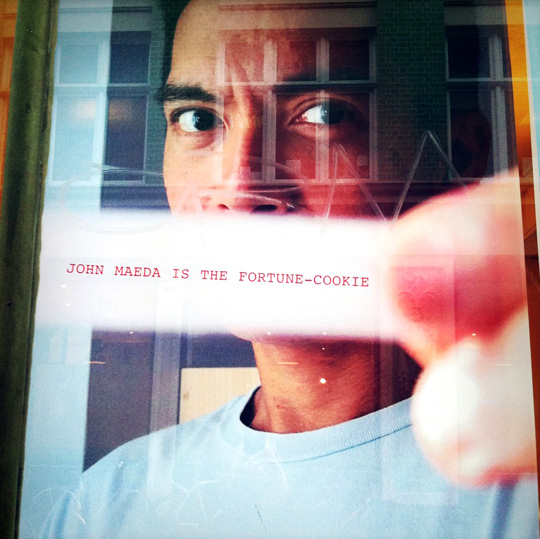Design Indaba: John Maeda
Our interview with the RISD president on the changing nature of design and the long process of becoming a successful leader


John Maeda, pioneer of programmatic design, delivered the closing address at South Africa’s premier conference on creativity, Design Indaba. He spoke to the crowd about the nature of code in art (“Programming is not very complicated, it’s just very boring—It’s what you can do with coding that matters more than programming itself.”), the vagaries of the term “design thinking” and the importance of redesigning leadership. We sat down with Maeda to get his thoughts on how the design of design is changing, and how a good leader is the one you wouldn’t necessarily notice.
Many of the speakers today, from Paula Scher to Ben Terrett to Masa Kawamua, talked not only about redesigning the work, but redesigning the process in which they work. Since you’re in a unique position to witness emerging trends in student culture and work, what you think about this?
It’s a good question. When Masa said that thing about using different tools to make things differently, it’s something I know really well, but it’s not something I thought about in the context in what I try to do as President. I’m not a professor any more, I don’t try to shape the curriculum or anything like that on the ground, basically. What I try to do is set an example, and what I’ve realized is that being an example takes time. Making things takes time too, of course, but it’s more within your control. Because we’re so used to taking fabric and cutting it in half, sewing it together and then: Done! Taking a piece of paper, making it red: Done! I think that I underestimated the power of time, because I was so living in half time, which is design, you know? Iterate, iterate, iterate.
I’m in my fifth year, so things I was trying to do are now there–not everything, of course, but things I thought were important are all kind of there. And you can ask the question, “Would they be there if I didn’t?” And maybe not–I have no idea. But when you see things come to fruition, that feels kind of right. And when you see it, it’s theirs, not mine.
Twitter is an example. It so prevalent now. Professors having Twitter is kind of normal. So it’s like, “If he does it, it’s ok,” is what kind of happened. So I’d like to think that just by choosing to stay different, be a little different, being an example for an institution that already does things well—to show a different curve serves as an example. I think leaders can either get to do that and fail at it, or get to do it and succeed at it, and I’ve been able to see those things stick, if you can call that success.

Thinking about leadership and the idea of failure, in design we’re so used to iterating, seeing what works and what doesn’t work and being able to react quickly. When you’re trying to lay the groundwork to shape a cultural shift—which is a long-term movement, are you able to take those sort of chances?
No, not at all, but it’s not my role now. When I see [VC firm] Kleiner Perkins and Andreessen Horowitz on campus as a normal thing, and when I’m in congress representing art and design as part of our STEM to STEAM initiative [a campaign championed by Maeda to reintroduce art and design as a core principle in American education], it’s like: “Oh! Well look what happened.” And I’m bewildered—how lucky to get to see that happen.
I always believed that America could lead in art and design, if it could find that strategic footing. It couldn’t live in the whole idea of “We’re important!” because people don’t care. So if you land where they care, which is economic development, then you land where people really want show they care. It’s a win-win for everybody.
When I found out yesterday that Rahm Emanuel has a STEAM program, I said “great!” And now in Portland, and with representative Schock in Illinois, whats neat is that it’s rolling, and that it’s all happening on its own.
I’m a big believer in that great quote attributed to Lao Tzu: “A leader is best when people barely know he exists. When his work is done, his aim fulfilled, they will say, ‘We did it ourselves.’ That after the wars are fought and the crops are grown, that the leader really wasn’t there.” I think that’s the most elegant way to make things happen. I’m a believer in that aesthetic, because that’s what I was taught.
Images courtesy RISD and John Maeda











